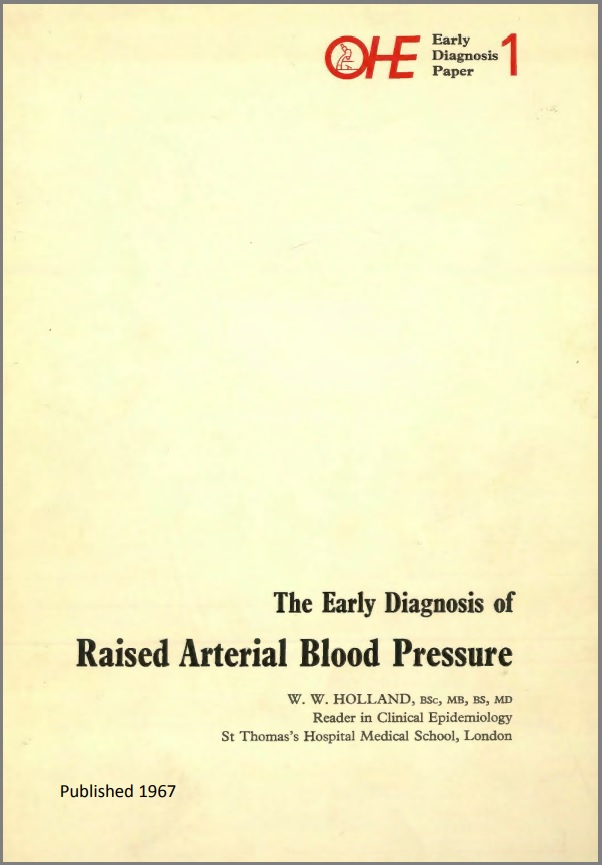Unlocking the Value of Combination Therapies

In July 1965, the Office of Health Economics held a colloquium on Surveillance and Early Diagnosis in General Practice at Magdalen College, Oxford. It was apparent from the discussion at this meeting that General Practitioners believed that if they were to act effectively…
In July 1965, the Office of Health Economics held a colloquium on Surveillance and Early Diagnosis in General Practice at Magdalen College, Oxford. It was apparent from the discussion at this meeting that General Practitioners believed that if they were to act effectively in this field, they had to have clear cut information on current screening methods and the impact of early diagnosis of disease on the long term health of the patient. As a result of this view an Advisory Committee was set up by the Office of Health Economics. After much discussion this Committee came to the conclusion that the best method of furthering this issue was to ask experts in a number of relevant clinical fields to write short papers specifically for General Practitioners. These were to conform to a general pattern, to be authoritative and to indicate clearly the limitation of existing methods and of our knowledge of the natural history of selected common disorders. The first two on early diagnosis of raised arterial blood pressure and on visual defects are now ready for publication. Others will follow on diabetes, anaemia, cancer of the cervix, diseases of the lung, cancer of the breast, kidney disease, coronary heart disease, overweight and depression. It is hoped to publish these in pairs at approximately two-monthly intervals.
These studies are being published at a time when early diagnosis is a subject of great interest and discussion. The acceleration of work in this area has not only provided us with increased knowledge but it has also drawn to our attention the limitations and problems involved in the development of such techniques. Firstly, it has indicated the limitation of our current knowledge of the natural history of the various diseases. Frequently the screening technique measures a symptom rather than the cause of a disease. Hence its discovery may be of little use because its significance is not fully understood. Secondly, it now seems unlikely that a single parameter can invariably be relied on to define the presence or absence of a particular disease. Thirdly, and directly leading from this, it is in many cases becoming clear that there is no sharp demarcation between the abnormal and the normal state. The ‘normal’ for different individuals may vary considerably; in consequence it is impossible to establish a single but meaningful definition of what constitutes disease in its early stages.
However, it would be wrong to be pessimistic about the future. Advances in medical care have a habit of moving through a number of stages. Initially there is a flush of excitement and hope as a new technique or concept emerges. There follows a period of gentle disillusionment. But solid and persistent research usually continues and ultimately establishes the real significance of the development. Often this culminates in substantial advance. In the field of early diagnosis we have entered the second stage; I am hopeful that we shall continue through to find its true place in medical care, and to establish clearly its benefits to the community. In the mean time I trust that this series of OHE booklets will give a useful analysis of the present position and encourage medical practitioners and workers in the public health field to undertake selected studies in this field so that we can rapidly establish sound programmes to prevent a number of disorders which today cause so much morbidity.
Early Diagnosis of Raised Arterial Blood Pressure
Holland, W.W.
(1967) Early Diagnosis of Raised Arterial Blood Pressure. OHE Early Diagnosis Series. Available from https://www.ohe.org/publications/early-diagnosis-raised-arterial-blood-pressure/